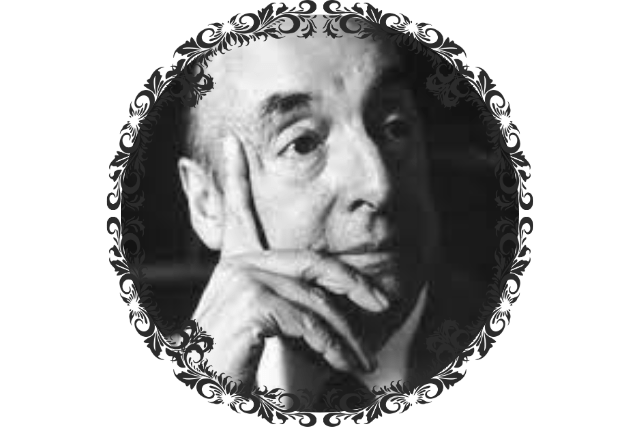Poem 2, Pablo Neruda’s “Keeping Quiet” Summary, Central Idea, Theme, Explanation, Extra Questions and Analysis of Keeping Quiet by Pablo Neruda.
Poem 2- Keeping Quiet by Pablo Neruda:
Pablo Neruda
Pablo Neruda (1904-1973) was a Chilean poet and diplomat celebrated for his rich and passionate verse. A master of metaphor and sensory language, his poems often explored themes of love, nature, politics, and human experience.
Keeping Quiet was first written in Spanish as “A Callerse” and published in the collection “Extravagaria” in 1958. In 1974, Alastair Reid translated “Extravagraia” into English.

Next on Flamingo: Poem 3- A Thing of Beauty , Poem 4–A Roadside Stand
Supplementary Reader: Class 12 ‘Vistas‘
Table of Contents
Vocabulary:
| Exotic: Foreign or unfamiliar; strikingly different or unusual. Single-minded: Having one overriding purpose or goal; focused or determined. Threatening: Expressing a menace or intention to harm or cause pain. To have no truck with: To refuse to be involved with or to have nothing to do with something or someone. |
Summary “Keeping Quiet” by Pablo Neruda:
“Keeping Quiet” by Pablo Neruda encourages a moment of silence and stillness among humanity, envisioning a world where people cease their activities and refrain from speaking briefly. This pause allows for a profound connection among individuals, fostering empathy and understanding.
In this tranquil moment, conflicts and violence cease, and people become aware of their shared humanity and the beauty of existence. Neruda suggests that by embracing silence, individuals can escape the relentless pursuit of progress and find solace in simply being alive.
Through this poem, Neruda emphasises the importance of introspection and contemplation, suggesting that in silence, humanity may find the answers to its deepest questions and discover the true essence of life.

SHOP: MSRO SMART NOTES: Class 12 English Literature
Central Idea “Keeping Quiet” Pablo Neruda:
The central idea of the poem “Keeping Quiet” by Pablo Neruda is the importance of introspection, stillness, and unity in the face of the chaotic and often destructive nature.
Neruda advocates for a moment of silence and contemplation, during which individuals pause their activities and refrain from speaking to connect with themselves and each other on a deeper level.
Through this pause, he suggests that people can gain insights into the human condition, foster empathy, and find solace in simply being alive. The poem emphasises the need to break free from the relentless pursuit of progress and to embrace the inherent beauty and interconnectedness of all life.
Analysis and Explanation of ‘Keeping Quiet’ for Auditory Learners:
Time: 20 minutes
Chapters/time stamps with subtitles are available.
Theme ‘Keeping Quiet’ Pablo Neruda:
- Unity and Stillness: The poem’s central theme is the power of collective silence to unite humanity. It urges people to cease their activities momentarily and come together in stillness, suggesting that at this moment, divisions could dissolve, and a sense of unity could be achieved.
- Environmental Consciousness: The poem touches on ecological themes by imagining a world where harm to nature ceases. The image of fishermen not harming whales and people refraining from polluting actions highlights the potential for humanity to coexist harmoniously with nature.
- Self-Reflection: The poem encourages readers to pause and reflect on their lives, actions, and self-understanding. It highlights that individuals can better understand their existence and the world in silence.
- Transformation and Renewal: The poem implies that a moment of silence and inactivity can lead to personal and global transformation. By interrupting the busyness of life, a “huge silence” might lead to a deeper understanding of ourselves and a break from the cycle of misunderstanding and conflict.
Pablo Neruda’s ‘Keeping Quiet’ is a thought-provoking and evocative poem that calls for a moment of silence to achieve unity, self-awareness, and environmental harmony. The poem invites readers to pause, reflect, and consider the potential for positive change within themselves and the world through its imagery, contrast, symbolism, and themes.
Line-by-Line Explanation of ‘Keeping Quiet’ by Pablo Neruda:
1. “Now we will count to twelve”: The opening line suggests a deliberate counting action to mark a moment of pause or reflection.
2. “and we will all keep still”: This emphasises the idea of silence and stillness, suggesting a collective decision to refrain from movement or speech.
3. “For once on the face of the Earth”: Line 3 emphasises the rarity of the moment, implying that such silence and stillness are unusual.
4. “let’s not speak in any language”: Neruda suggests a cessation/end of verbal communication, transcending linguistic barriers.
5. “let’s stop for one second”: Line 5 emphasises the brevity/shortness of the pause being proposed, highlighting the significance of even a brief moment of silence.
6. “and not move our arms so much”: This suggests a physical stillness, urging people to avoid unnecessary movement.
7. “It would be an exotic moment”: Neruda describes the moment of stillness as “exotic,” suggesting that it would be unfamiliar and rare.
8. “without rush, without engines”: This line emphasises the absence of haste/rush/urgency and the quietness resulting from a cessation of mechanical noise.
9. “we would all be together”: Despite differences and divisions, this moment of stillness unites everyone in a shared experience.
10. “in a sudden strangeness”: The cessation of activity creates an atmosphere of unfamiliarity or strangeness.
11-12. “Fishermen in the cold sea / would not harm whales”: Neruda presents an image of harmony between humans and nature, suggesting that environmental harm would cease in this moment of stillness.
13-14. “and the man gathering salt / would look at his hurt hands”: This line draws attention to the consequences of human activity, encouraging reflection on the impact of our actions.
15-16. “Those who prepare green wars, / wars with gas, wars with fire”: Neruda shifts to a critique of war and violence, condemning the destruction caused by human conflict.
17. “victory with no survivors”: (Paradoxical line) Line 17 highlights the devastating nature of inevitable conflicts, where victory results in destruction.
18. “would put on clean clothes”: Neruda suggests a symbolic cleansing, perhaps implying a desire for a fresh start or a rejection of violence.
19. “and walk about with their brothers”: This line emphasises a sense of fraternity or unity among humanity.
20. “in the shade, doing nothing”: Neruda contrasts violence and conflict with the peacefulness of doing nothing, suggesting that such moments of stillness are valuable.
21-23. “What I want should not be / confused / with total inactivity”: Neruda clarifies that his call for stillness does not advocate complete passivity but rather a moment of reflection and pause.
24-25. “Life is what it is about; / I want no truck with death”: Lines 24-25 highlight the importance of life and vitality, rejecting death and destruction.
26-27. “If we were not so single-minded / about keeping our lives moving”: Neruda criticises modern life’s constant busyness and activity, suggesting that it prevents deeper understanding and connection.
28. “and for once could do nothing”: He proposes embracing inactivity and highlighting its potential to lead to greater insight.
29-30. “Perhaps a huge silence / might interrupt this sadness”: Neruda suggests that silence and stillness can disrupt feelings of sadness or despair.
31. “of never understanding ourselves”: He reflects on humanity’s perpetual struggle to understand itself, implying that moments of stillness offer an opportunity for introspection.
32-33. “and of threatening ourselves with / death”: Neruda suggests that the constant activity and lack of introspection contribute to feelings of existential threat or fear of mortality.
34. “Perhaps the Earth can teach us”: Neruda turns to the natural world as a source of wisdom and insight.
35-36. “as when everything seems dead / and later proves to be alive”: He uses nature as a metaphor, suggesting that moments of stillness can reveal hidden vitality and potential.
37. “Now I’ll count up to twelve”: The poem returns to its initial gesture, reinforcing the idea of counting and marking time.
38. “And you keep quiet, and I will go”: Neruda concludes the poem by urging the reader to continue in silence as he departs, leaving them to reflect on the poem’s message.
Question Answers ‘Keeping Quiet’:
Textbook Question Answers:
Q1: What will counting up to twelve and keeping still help us achieve?
A1: Counting up to twelve and keeping still helps us achieve a moment of tranquillity and unity. It allows for a pause in the hectic pace of life, enabling individuals to connect with themselves and each other on a deeper level.
Q2: Do you think the poet advocates total inactivity and death?
A2: No, the poet does not advocate total inactivity and death. Instead, he emphasises the importance of momentarily stepping away from the relentless pursuit of progress and activity. He suggests that by embracing stillness and silence, individuals can gain insights into life and the human condition, moving away from the constant fear of death.
Q3: What is the ‘sadness’ that the poet refers to in the poem?
A3: The “sadness” that the poet refers to in the poem is the pervasive feeling of not understanding ourselves and the constant threat of death. It is the existential anguish that accompanies the relentless pursuit of progress and the lack of introspection and connection with others.
Q4: What symbol from Nature does the poet invoke to say that there can be life under apparent stillness?
A4: The poet invokes the symbol of the Earth to suggest that life can exist under apparent stillness. He compares the Earth to a seemingly lifeless entity that eventually proves alive, indicating that a vibrant and thriving existence is waiting to be discovered beneath the surface of apparent stillness.

SHOP: MSRO SMART NOTES: Class 12 English Literature
Extract-Based Questions Answers:
Extract 1:
“Now we will count to twelve
and we will all keep still.”
Q1: What action is the poet asking everyone to take when he says, “Now we will count to twelve”?
A1: The poet suggests collective stillness and contemplation.
Q2: What is the significance of counting to twelve in this context?
A2: Counting to twelve symbolises a controlled and measured pause, encouraging individuals to synchronise their thoughts and actions.
Q3: The poet’s instruction to count to twelve and maintain stillness seems deceptively simple. How might this act be interpreted as a symbolic gesture rather than a literal instruction?
A3: Beyond its surface simplicity, the act of counting to twelve and embracing stillness holds symbolic significance. The counting represents a deliberate breaking of the monotonous rhythm of everyday life, signifying a conscious effort to transcend the mundane and embrace a moment of pause. This gesture suggests an opportunity for renewal, self-awareness, and exploring fundamental truths.
In addition, stillness signifies a withdrawal from the constant hustle and bustle, allowing individuals to attune themselves to their inner thoughts, emotions, and surroundings. This symbolic act highlights the poem’s more prominent themes of reflection, unity, and the potential for change that arises from a single shared moment of contemplation.
Extract 2:
“For once on the face of the Earth
let’s not speak in any language,
let’s stop for one second,
and not move our arms so much.”
Q1: Why does the poet suggest not speaking in any language?
A1: The poet proposes emphasising a shared experience beyond linguistic boundaries, fostering a connection through silence.
Q2: What is the poet’s intention behind asking people to “not move our arms so much”?
A2: By suggesting reduced physical movement, the poet aims to promote stillness and a temporary break from the usual busyness of life.
Q3: Why do you think the speaker wants us to stop moving and speaking?
A3: The speaker wants us to stop moving and speaking to create a moment of peace and reflection, free from daily life’s usual rush and noise.
Q4: What do you think the speaker hopes to achieve by asking everyone to keep still?
A4: The speaker hopes to achieve unity and sudden strangeness, allowing us to experience a rare moment of tranquillity and gain a deeper understanding of ourselves and our world.
Q5: In this extract, the poet proposes a moment of silence devoid of language and physical movement. How does this proposal reflect the poet’s larger message about the power of stillness and unity?
A5: The poet suggests that staying silent and still helps us understand the poem’s message about calm and togetherness. People can connect deeply by not talking or moving too much, going beyond just words and actions. This creates a moment for everyone to think quietly and feel united, no matter how different.
The lack of talking and excessive movement shows that we can break down barriers and understand each other better when quiet. The poet’s lines show their hope to create a “strangeness” where all people come together in a moment of deep thought and shared understanding.
Extract 3:
“Fishermen in the cold sea
would not harm whales
and the man gathering salt
would look at his hurt hands.”
Q1: What message does the poet convey through the fishermen and whales’ imagery?
A1: The poet emphasises that humanity’s actions could be more considerate and attuned to nature in a moment of quiet reflection.
Q2: What is the significance of the man gathering salt and looking at his hurt hands?
A2: The image signifies a moment of self-awareness, suggesting that through stillness, individuals might recognise the impact of their actions on both themselves and the environment.
Q3: What is the significance of the fishermen not harming whales?
A3: It is significant because it highlights the harm humans cause to nature and suggests that pausing could prevent this harm.
Q4: What would the man gathering salt do if he kept still?
A4: The man gathering salt would look at his hurt hands.
Q5: What does this extract suggest about human activity and its impact on nature?
A5: The extract suggests that human activity often harms nature, and pausing and reflecting could lead to less harm and greater awareness of our actions.
Q6: How does keeping still relate to the message of the poem?
A6: Keeping Still relates to the poem’s message by emphasising the importance of taking a moment of silence and inactivity to reflect on our actions, better understand ourselves, and potentially reduce the harm we cause to ourselves and the world around us.
Extract 4:
“Those who prepare green wars,
wars with gas, wars with fire,
victory with no survivors,
would put on clean clothes
and walk about with their
brothers
in the shade, doing nothing.”
Q1: What are “green wars” as mentioned in the poem?
A1: “Green wars” likely refer to environmental destruction caused by human conflicts or activities, such as deforestation or pollution.
Q2: What types of wars does the speaker mention in this extract?
A2: The speaker mentions green wars, wars with gas, and wars with fire.
Q3: What does “victory with no survivors” mean?
A3: “Victory with no survivors” means a win that results in destruction, where no one is left alive to enjoy the victory.
Q4: What would the people who prepared for wars do if they kept still?
A4: They would wear clean clothes and walk about with their brothers in the shade, doing nothing.
Q5: Why does the speaker suggest these people would put on clean clothes?
A5: Putting on clean clothes symbolises a fresh start or a return to purity and peace, away from the destruction of war.
Q6: What does “walk about with their brothers in the shade, doing nothing” imply?
A6: It implies that instead of engaging in destructive activities, people would spend time peacefully and harmoniously with each other, enjoying a moment of rest and reflection.
Q7: How does this extract connect to the theme of the poem?
A7: The extract connects to the poem’s theme by highlighting the potential for peace and understanding if people take a moment to pause and reflect instead of engaging in harmful activities. It emphasises the possibility of a more harmonious and less destructive world.
Q8: What change does the poet envision for those who prepare for war?
A8: The poet Imagines a transformation where those preparing for war would instead engage in peaceful activities and unity with their fellow humans.
Q9: How does the idea of “victory with no survivors” relate to the theme of stillness and silence?
A9: The concept of victory without survivors signifies an end to the conflict, where individuals recognise the futility of violence and opt for peaceful coexistence.
Extract 5:
“What I want should not be
confused
with total inactivity.
Life is what it is about;
I want no truck with death.”
Q1: What does the speaker want to clarify about his request for silence?
A1: The speaker wants to clarify that his request for silence should not be confused with total inactivity.
Q2: What should not be confused with total inactivity?
A2: The speaker’s desire for silence and stillness should not be confused with total inactivity.
Q3: What is the speaker’s view on life?
A3: The speaker views life as something important and valuable, and he wants to focus on living rather than being inactive or associated with death.
Q4: What does the speaker mean by “I want no truck with death”?
A4: The speaker means that he does not want any association or involvement with death. He values life and does not seek death or inactivity.
Q5: How does the speaker differentiate between keeping still and inactivity?
A5: The speaker differentiates by explaining that keeping still for a moment is about taking time to reflect and understand, not about being wholly inactive or lifeless.
Q6: Why do you think the speaker emphasises that life is what it is about?
A6: The speaker emphasises that life is what it is about to highlight the importance of living fully and consciously. He wants to clarify that his call for silence and stillness is meant to enhance our appreciation of life, not to detract from it.
Q7: How does the poet clarify the difference between what he wants and total inactivity?
A7: The poet emphasises that his desire for stillness is not equivalent to complete inaction; instead, it is a meaningful pause for introspection.
Q8: What does the poet mean by “I want no truck with death”?
A8: The poet rejects embracing death and emphasises his preference for a life filled with purpose, experience, and connection.
Extract 6:
“If we were not so single-minded
about keeping our lives moving,
and for once could do nothing,
perhaps a huge silence
might interrupt this sadness
of never understanding ourselves
and of threatening ourselves with
death.”
Q1: What does the speaker mean by being “single-minded about keeping our lives moving”?
A1: The speaker means we are always focused on being busy and constantly active without pausing and reflecting.
Q2: What does the speaker suggest we do “for once”?
A2: The speaker suggests that we should do nothing for once, taking a moment to stop all activity.
Q3: What might happen if we could “do nothing” for a moment?
A3: Doing nothing for a moment might create considerable silence that could help us reflect and understand ourselves better.
Q4: How does the speaker describe the potential benefit of a “huge silence”?
A4: The speaker describes that an immense silence might interrupt the sadness of not understanding ourselves and the fear of death.
Q5: What sadness does the speaker refer to in this extract?
A5: The sadness the speaker refers to is the feeling of never understanding ourselves and always being preoccupied with the fear of death.
Q6: What does the speaker say we are threatening ourselves with?
A6: The speaker says we are threatening ourselves with death by being constantly busy and not taking time to reflect and understand our lives.
Q7: How does this extract relate to the theme of self-reflection in the poem?
A7: The extract emphasises the importance of pausing and reflecting on our lives, which is the poem’s central theme. The speaker believes a moment of silence can lead to greater self-understanding and reduce the constant fear and sadness of never genuinely knowing ourselves.
Q8: What does the poet suggest is the consequence of being single-minded about keeping our lives busy?
A8: The poet suggests that constant busyness prevents us from comprehending our lives and contributes to sadness and existential uncertainty.
Q9: How does the poet view the idea of silence in this context?
A9: The poet sees silence as a potential interruption to the negative emotions and anxieties arising from not fully grasping our existence.
Extract 7:
“Perhaps the Earth can teach us
as when everything seems dead
and later proves to be alive.”
Q1: What does the speaker mean by “as when everything seems dead”?
A1: The speaker means times when nature appears lifeless, such as when plants and trees look dead in winter.
Q2: What is the significance of things that “later prove to be alive”?
A2: The significance is that even when things seem lifeless, they can return to life, as seen in spring when plants and trees bloom again.
Q3: How can the Earth teach us, according to the speaker?
A3: The Earth can teach us that life can appear still or dead, but it is often temporary before renewal and growth.
Q4: What lesson can we learn from nature, as suggested by this extract?
A4: We can learn that periods of stillness or apparent inactivity can be followed by renewal and life, teaching us the value of patience and reflection.
Q5: What does the poet propose that the Earth can teach us?
A5: The poet suggests that the Earth can impart lessons of revival and unexpected renewal arising from situations that initially appear lifeless.
Q6: How does the idea of the Earth teaching us relate to the theme of the poem?
A6: The concept of the Earth teaching us reinforces the theme of stillness and silence, indicating that moments of silence can reveal hidden truths and opportunities for rejuvenation.
Q7: The poet suggests that the Earth holds valuable lessons for humanity. How does this imagery of the Earth teach us to connect with the idea of stillness and renewal?
A7: The imagery of the Earth as a teacher conveys the idea that the natural world has the potential to impart profound insights to humanity. The mention of how “everything seems dead and later proves to be alive” encapsulates the cycle of nature’s rejuvenation. This imagery mirrors the themes of stillness and renewal explored throughout the poem.
Just as the Earth renews itself after a period of dormancy, the act of stillness can lead to personal renewal, self-discovery, and a deeper understanding of life. The Earth’s ability to come alive after apparent dormancy becomes a metaphor for the transformative potential of stillness. It shows that moments of quietude can lead to unexpected growth and renewal in individuals and the world around them.





